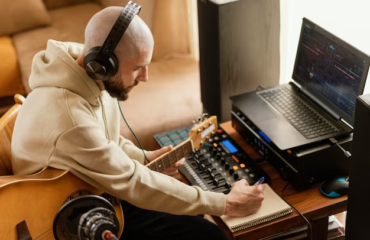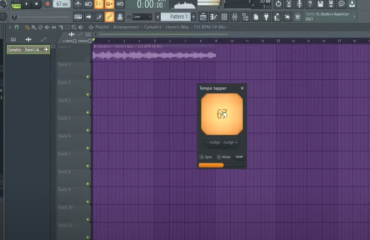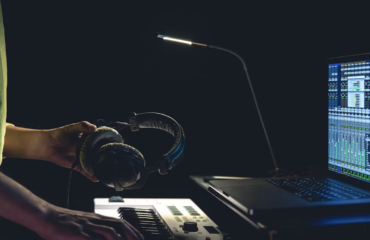As an independent musician, it’s crucial to grasp the inner workings of the Spotify algorithm. With a massive influx of songs uploaded weekly, it’s not enough for your music to simply catch the attention of fans—it needs to secure placement in algorithmic playlists like Discover Weekly and Release Radar. Understanding the intricacies of algorithms can significantly impact your music’s reach and stream count. It can be the determining factor between gaining exposure to a wider audience or fading into obscurity.
In this informative article, we’ll delve into the mechanics of the Spotify algorithm, providing valuable insights and practical tips to enhance your chances of being discovered.
Spotify Algorithm: An In-Depth Analysis of its Functionality
At its essence, the Spotify algorithm represents a highly intricate and advanced machine learning system designed to personalize the music listening experience for each user. However, the complexity of this system extends far beyond its core functionality. It takes into account a multitude of diverse factors to craft a unique and tailored journey for every individual. These factors encompass a wide spectrum, including the user’s historical listening patterns, their favored songs and artists, as well as their level of engagement with various genres and playlists. By analyzing and incorporating these elements, the algorithm strives to deliver a truly personalized and enjoyable musical voyage for Spotify’s vast user base.
- Machine Learning
The Spotify algorithm employs advanced machine learning techniques to analyze a wealth of data and craft customized playlists and recommendations for each user. For instance, if a user frequently enjoys pop music, the algorithm can suggest similar pop songs or artists that align with their preferences.
- Tailoring to Listening Habits
Moreover, the algorithm takes into consideration the user’s unique listening habits and preferences. Factors like preferred time of day for music consumption, session duration, and device usage all play a role in shaping the algorithm’s ability to offer more precise and relevant recommendations.
- The Magic of Collaborative Filtering
Additionally, the algorithm leverages collaborative filtering, which involves studying the listening habits and preferences of other users who share similar musical tastes. By examining the behaviors of users with comparable interests, the algorithm
can recommend artists and tracks that resonate with the broader community of listeners who appreciate similar music.
Strategies for Artist Growth on Spotify’s Algorithm
Now that we comprehend how Spotify relies on AI to curate music recommendations, let’s explore how you, as an artist, can optimize your chances of harnessing the power of Spotify’s algorithm.
The key lies in engagement—a concept that holds remarkable significance.
Audience Engagement
Within Spotify for Artists, we have access to crucial engagement metrics that Spotify utilizes to evaluate our music. These metrics encompass:
- Listeners;
- Streams;
- Streams per Listener;
- Saves;
- Playlist Adds.
Furthermore, there are additional metrics that influence Spotify’s perception and ranking of an artist, which are not visible in Spotify for Artists. These metrics encompass factors such as listening duration, shares, and Natural Language Processing.
Duration of Listening
In simpler terms, engagement in the context of Spotify refers to the length of time users spend listening to your track before skipping it. When users consistently listen to a song in its entirety, it sends a positive signal to the algorithm, indicating that the track is engaging and enjoyable. This, in turn, increases the likelihood of your song being recommended to other listeners. On the other hand, if a song is frequently skipped upon initial or repeated listens, it indicates a lack of engagement and can discourage its inclusion in algorithmic music discovery playlists. Therefore, capturing and maintaining the attention of listeners is crucial for optimizing your chances of harnessing the power of Spotify’s algorithm.
The Impact of Shares on Spotify’s Algorithm
As evidenced by Spotify Wrapped 2022, the platform goes beyond just tracking listening habits and also keeps a record of the frequency and methods through which songs are shared among users. This sharing data encompasses various platforms such as iMessage, WhatsApp, Snapchat, Telegram, and more. For artists, this sharing data is made visible within their Spotify Wrapped, providing valuable insights into their audience’s listening history throughout 2022.
When a song is shared by listeners, it holds significance beyond individual preferences. It signifies that the sharer not only has an interest in the song but also believes that others would find it appealing as well. In a way, sharing becomes a form of endorsement, as Spotify’s algorithm takes these sharing actions into account when generating music recommendations.
When your song garners frequent shares, it triggers the algorithm to leverage collaborative filtering techniques. This involves testing the track among users who have similar listening preferences to those who shared it. By doing so, Spotify aims to expose your music to a broader audience that has a higher likelihood of appreciating your style or genre. As a result, your music has increased chances of reaching new audiences and gaining broader exposure, thanks to the power of Spotify’s algorithm and the engagement generated through sharing.
NLP in Spotify’s Realm
Spotify’s data analysis incorporates an additional significant element known as Natural Language Processing (NLP). By utilizing NLP, Spotify scours various online platforms, including social media platforms and blog articles, to identify mentions of specific artists or songs. Through the analysis of these conversations, Spotify gains valuable insights into the topics and discussions surrounding music.
To enhance their NLP capabilities, Spotify has made strategic acquisitions of companies specializing in music intelligence technology, such as Echo Nest. These acquisitions enable Spotify to leverage advanced technology to identify key keywords and terms associated with songs. This process facilitates the recommendation of other tracks that share similar characteristics, utilizing the power of NLP.
Essentially, NLP empowers Spotify to categorize songs into distinct groups and assign descriptive adjectives that further classify each individual track. This classification process significantly improves the precision of music recommendations, enabling listeners to discover songs that align with their preferences in a more nuanced and accurate manner. By incorporating NLP into their data analysis, Spotify enhances the overall user experience and provides a more tailored and personalized music discovery journey.
NLP’s Ability to Unearth Fresh and Unexplored Music
In situations where there is limited online information available about a specific song, Spotify takes on the responsibility of identifying and categorizing the music. Through a meticulous process, Spotify utilizes raw audio data to create a sound spectrogram, which allows for the extraction of essential song characteristics such as key, tempo, and loudness.
However, it is vital for artists to understand the importance of utilizing social media platforms beyond simply directing fans to their streaming profiles. Engaging with fans through social media presents a unique opportunity to gather feedback, initiate discussions about the track, and cultivate a loyal community of listeners. By actively leveraging social media channels, artists can not only expand their reach but also establish meaningful connections with their audience, fostering a vibrant and engaged fan base. This active engagement on social media enhances the overall music promotion strategy and complements the efforts to optimize visibility and success on Spotify.
Algorithmic Advantage for Your Song
Now that we understand the inner workings of Spotify’s algorithm for both users and artists, let’s dive into the key to making your song go viral on this platform: utilizing the algorithm to your advantage.
To secure a spot in algorithmic playlists and drive high engagement, artists need to implement effective strategies. Here are three essential tips to help make your song go viral on Spotify:
| Strategies | Description |
|---|---|
| Quality Music | Craft exceptional music that captivates listeners and creates a lasting impact. |
| User-Generated Playlists | Utilize the influence of user-generated playlists to expand the reach of your songs. Encourage fans to create and share playlists featuring your music. |
| Social Media Advertising | Leverage social media platforms for targeted advertising campaigns, reaching a broader audience and generating buzz for your profile. |
Music Quality Matters: Putting Your Best Foot Forward
One fundamental aspect of success, yet often overlooked, is the quality of your music. Regardless of the effort and resources you invest in promotion and reaching the right audience, if your music falls short, it can lead to a dead end.
That’s why it’s crucial to put your heart and soul into creating exceptional music. Don’t cut corners or settle for mediocrity. Instead, strive for excellence and give it your all. When you pour your passion and dedication into crafting the best possible music, every subsequent step becomes easier and more rewarding.
User-Generated Playlists
In the pursuit of reaching editorial and algorithmic playlists on Spotify, the potential of user-generated playlists should not be overlooked. These playlists serve as valuable evidence that your song resonates with a wider audience.
To secure a spot on these playlists, consider the following three steps:
- Find Relevant Playlists: Search for playlists that align with the mood or genre of your new music. Identify playlists where your song would be a seamless addition;
- Verify Organic Engagement: Ensure that the playlists you target have genuine listeners and avoid those with artificially inflated followers. Authentic engagement is key to maintaining a positive reputation with Spotify’s algorithm;
- Pitch Your Music: Take the initiative to reach out to playlist creators and pitch your music. Craft a compelling message highlighting the unique qualities of your song and why it would be a great fit for their playlist.
When reaching out to user-generated playlists, it’s crucial to prioritize relevance over popularity or ease of placement. The goal is to secure placements that will yield the best return on investment in terms of saves and playlist adds for each play.
Instead of aiming for the biggest or easiest-to-land playlists, focus on identifying playlists that align closely with your music’s genre, mood, or target audience. By targeting playlists that are genuinely interested in your style of music, you increase the likelihood of earning meaningful engagement and maximizing the impact of each play.
Social Media Advertising
Social media advertising presents a viable option for enhancing algorithmic success. Commonly utilized platforms include Facebook/Instagram, TikTok, and YouTube.
To begin, artists should define their target audience. Subsequently, they can craft captivating advertisements that showcase their music and style, directing users to Spotify for full song listening. The value of social media music promotion to Spotify’s algorithm lies in its ability to filter out individuals who may not appreciate the song before they arrive at the music streaming platform. Furthermore, this form of promotion often yields cost-effective results.
In essence, when a user enjoys a song preview and proceeds to Spotify, the likelihood of saving or adding the song to their playlist increases. This engagement from listeners serves as a significant positive indicator for Spotify’s algorithm. The high engagement rate has the potential to propel a song onto more users’ Release Radar, Discover Weekly, and other algorithmic playlists. Moreover, if the song continues to perform well with significant engagement, it may even receive an editorial placement.
Conclusion
Undoubtedly, the Spotify algorithm is a complex entity. Nevertheless, there are numerous approaches to enhance the probability of the algorithm working in your favor. Key methods include leveraging social media advertising campaigns and implementing playlist outreach strategies, both of which can significantly boost a song’s engagement rate. Furthermore, these strategies attract dedicated fans who are more likely to listen repeatedly, thereby improving important data metrics such as total streams and streams per listener.
FAQ
Spotify’s algorithm is a complex system that plays a crucial role in shaping the user experience on the platform. For users, the algorithm is primarily based on their listening data, tailoring personalized recommendations and playlists. However, for artists, the algorithm takes into account various engagement statistics and factors to determine their visibility and placements on algorithmic playlists. While the specific workings of the algorithm are continually evolving, understanding how it functions can greatly benefit artists seeking to optimize their presence on Spotify. For a more comprehensive explanation of how the Spotify algorithm works, you can refer to our full article which provides up-to-date information.
Spotify algorithmic playlists are curated collections of music generated by the platform’s algorithm based on user preferences and listening habits. These playlists include popular ones such as Discover Weekly, Release Radar, Your Daily Mix, Radio, yearly Spotify Wrapped “Top Songs” playlists, and On Repeat. Each of these playlists serves a different purpose, such as introducing new music, showcasing recently released tracks, providing a personalized mix, or playing similar songs based on user preferences. Artists with high engagement across their music catalog can earn placements in various algorithmic playlists, thereby gaining exposure to a wider audience.
Getting an algorithmic play on Spotify requires some strategic considerations. Firstly, it’s essential to ensure that your music is professionally produced and has some online buzz surrounding it. Consistently releasing content increases your chances of being noticed by the algorithm. Leveraging the data provided by Spotify can help identify popular regions or tracks with higher attention. Implementing smart digital marketing techniques like social media campaigns and playlist outreach can also contribute to gaining algorithmic plays. Ultimately, optimizing your digital presence and visibility on Spotify is crucial for increasing your chances of not just one, but thousands of algorithmic plays.
The Spotify algorithm is triggered by a combination of factors that help curate the user’s experience on the platform. It takes into account genre, artist popularity, user behavior, streaming data, and more. To have your music pushed by Spotify’s algorithmic playlists, it’s important to ensure that your music aligns with Spotify’s specific criteria. Investing in content promotion on social media and Spotify, as well as actively engaging with Spotify editors and playlist curators, can increase your visibility and profile among influential playlists. Being placed in relevant playlists aids the algorithm in finding similar songs, enhancing the impact of the Spotify algorithm on your music’s reach.
Yes, Spotify Radio is indeed an algorithmic playlist. It utilizes a combination of natural language processing (NLP) and listener habits to group together relevant and related songs. Spotify Radio allows users to discover new music based on their preferences, offering a personalized radio-like experience. To have your music included in the Spotify Radio algorithmic playlist, you can refer to our full article for a detailed explanation and tips.








